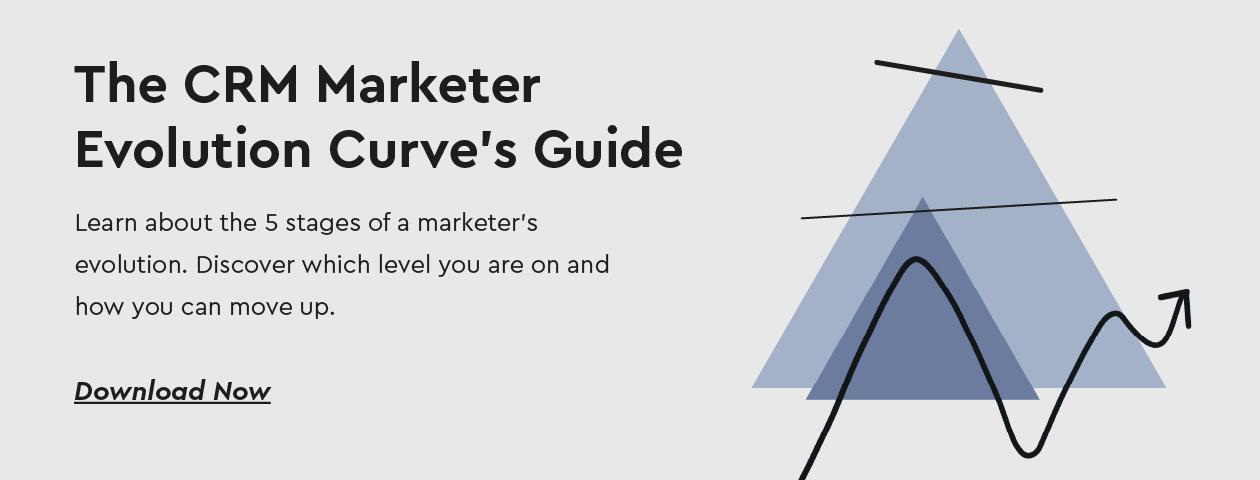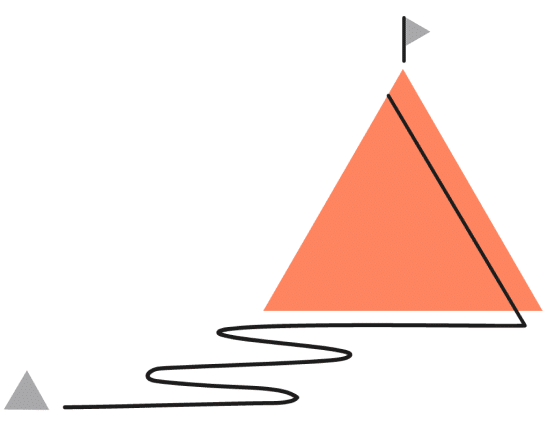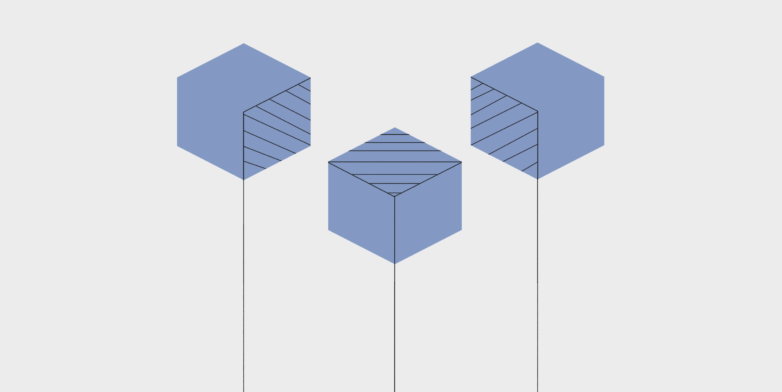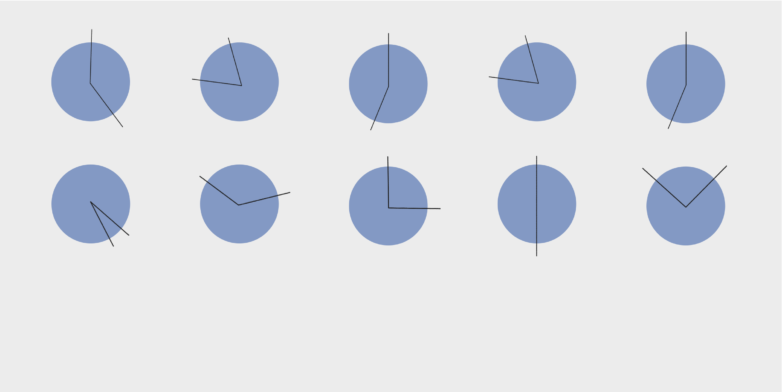What is Marketing Orchestration
Marketing orchestration allows marketers to perform high-quality campaigns faster by coordinating data from multiple platforms. By synchronizing teams, content, channels, workflows, and data, marketing orchestration ensures all resources are working together to improve the customer journey. Marketing orchestration platforms integrate marketing systems and data sources to understand what each customer is doing and determine the next step the customer needs. Campaign orchestration filters data that allows marketing to run smoothly.
The CRM Marketer evolution curve
Types of Marketing Orchestration
Marketing orchestration combines many marketing techniques to deliver a centralized marketing campaign. Here are some examples of methods of marketing orchestration:

Message Frequency and Capping
Message Frequency and Capping is used when customers are eligible for multiple marketing campaigns in one day or week and you want to limit the number of campaigns they receive. You can set a frequency cap for per day or per week. For example, if a customer is capped at two campaigns per day and five campaigns per week, they will receive campaigns based on their chronological delivery until the customer reaches the limit. After a customer reaches their set limit of delivered campaigns, they will not receive any more messages.
Message Frequency and Capping is a great way to limit the number of notifications a customer receives in a specific period. However, the campaigns are delivered in chronological order, meaning customers may receive less successful campaigns if they are set to be delivered first.
Journey Mapping
Once a customer segment is defined, marketers decide what they want to achieve with each of the segments and create a customer journey for them. Journey mapping allows you to set a goal for each customer segment and lead the customer to the outlined destination. Mapping a customer journey allows you to visualize the campaigns you want to deliver to customers. Journey mapping is great for short-term decision making but can be difficult for long-term customer retention because it is difficult to predict every decision your customer makes.
Prioritization and Exclusion
Prioritization and exclusion allow marketers to define priorities for every marketing campaign. Using prioritization and exclusion solves some of the problems with frequency capping as customers who are set to only receive one or two messages a day will receive the most significant messaging. It allows you to create more elaborate marketing campaigns. You can identify the purpose of each communication and create audiences for the communications using qualifiers and setting thresholds.
It is important to continuously monitor the effectiveness of marketing campaigns and how different behaviors affect the success of the journey.
A.I. Based Journeys
A.I. based journeys implement algorithms that scale the ability to manage hundreds of marketing campaigns. Once brands grow and have implemented many campaigns, it becomes harder to anticipate the value each campaign will provide. A.I. based journeys uses an algorithm that allows you to think about hundreds of campaigns at a time and anticipate the priority of each. It orchestrates an entire journey by determining the priority of campaigns based on past experiences of many prior campaigns.
Using A.I. allows marketers to focus on creating campaigns, defining market segments, and building customer relationships. It also helps you balance between multiple types of orchestration in the customer journey mix. Assigning the priority of each campaign can be difficult, therefore you should let the algorithm prioritize the campaigns you cannot do manually.
The CRM Marketer Evolution Curve’s Guide
Learn about the 5 stages of a marketer’s evolution. Discover which level you are on and how you can move up.
Marketing Orchestration Tools
Marketing orchestration ensures you are conducting a synchronized and data-drive campaign where messaging, targeting, and timing are optimized creating the best chance for success. It aligns the sales and marketing teams, connecting different customer acquisition channels across different tools and campaigns. Companies implement many tools to coordinate marketing and sales. Here are some examples of tools companies use:
Point or Single Channel Orchestration
Using point or single channel orchestration, each channel is created in a silo. Marketers need to log in to each channel to decide the order of campaigns. The individual silos do not work together, so marketers need to organize each campaign individually and ensure they are aligned. For example, you would have a separate channel for Social Media campaigns, Email campaigns, and Mobile Marketing Campaigns.
Multichannel Orchestration
Multichannel orchestration or cross-channel campaign management has all channels in one platform. Instead of logging into different platforms for several types of campaigns, marketers log in to a single interface and can send multiple types of marketing messages. Multichannel orchestration allows you to access your marketing messages in one place and ensures your messaging is consistent throughout all campaigns.

Implement Marketing Campaign Orchestration with Optimove
Optimove uses advanced and highly intelligent orchestration, ensuring your systems are synchronized across all systems for the most success across all channels. Our marketing calendar allows you to define priorities that will adjust for each customer’s actions.
Optimove’s calendar and orchestration implements a systematic approach that creates an entire marketing plan that is highly personalized and effectively reaches each individual customer. Self-Optimizing Journey uses A.I. based journeys to evaluate customer journeys and campaigns to determine the best campaign for the customer to receive next. At Optimove we suggest using multiple types of marketing orchestration to maximize the customer experience.
Request a demo today to learn how you can use Optimove to enhance your customer relationships.
Get a personalized tour of Optimove
Let us show you how to go from tens to hundreds of segments


